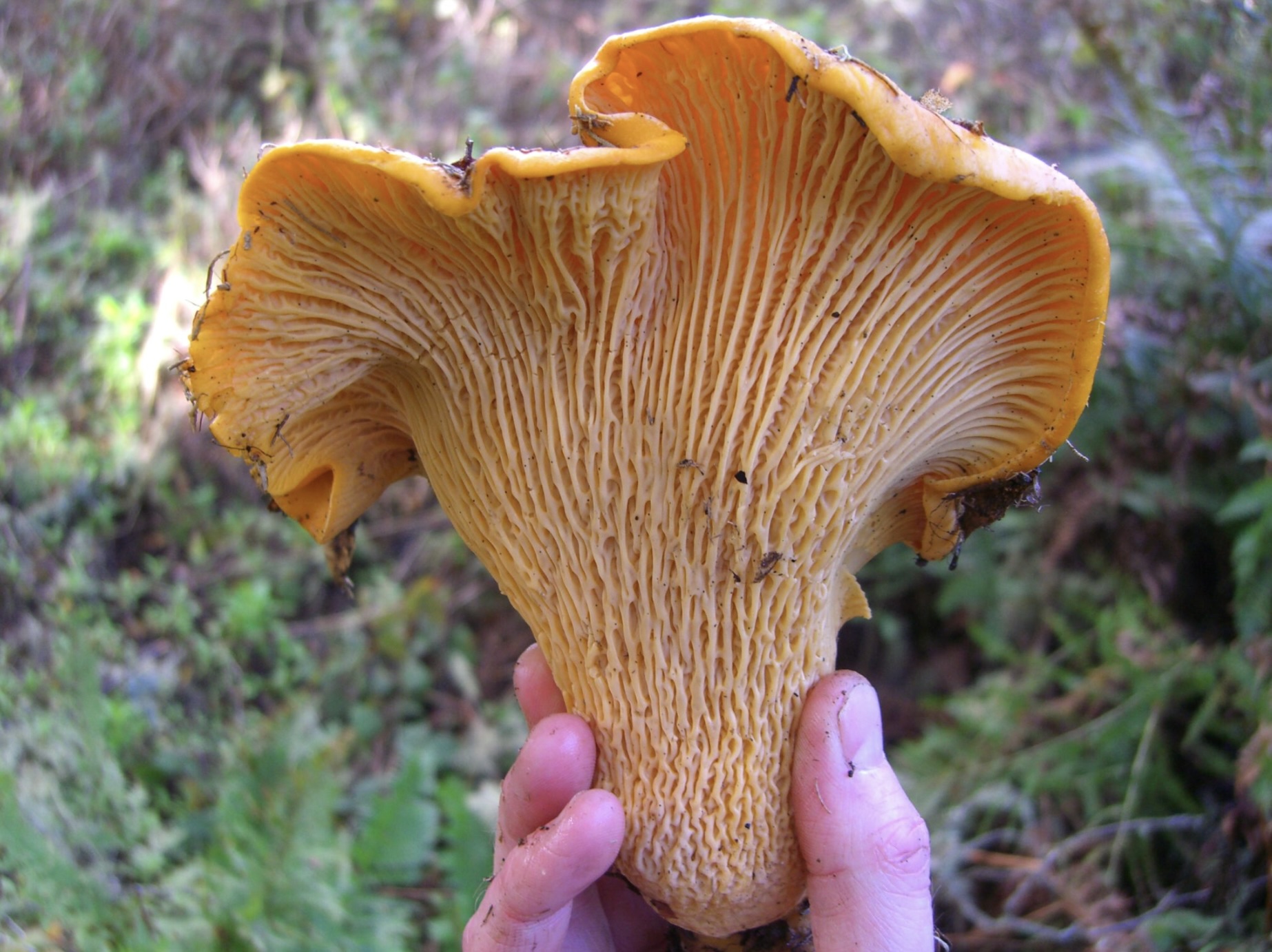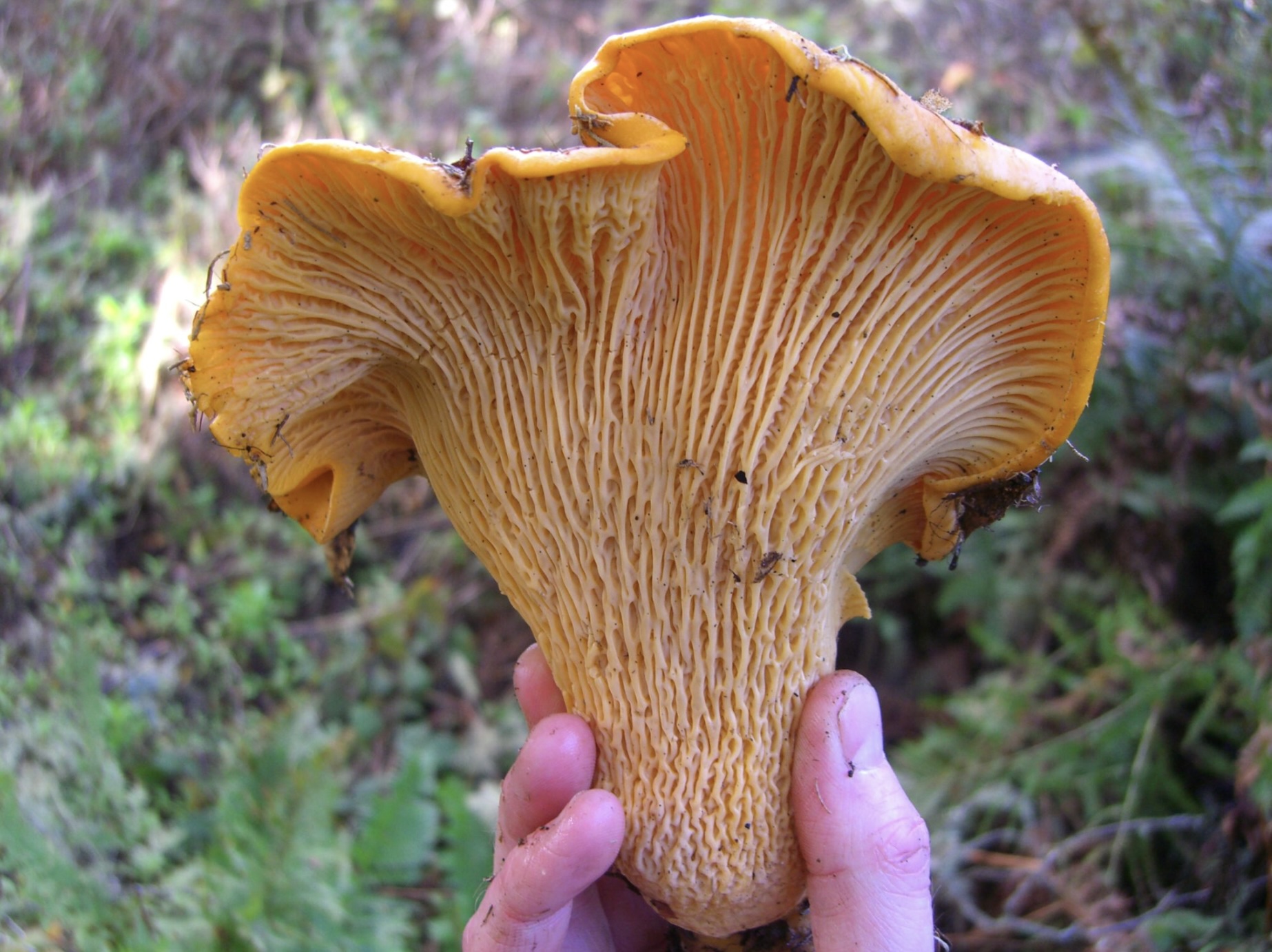|
Getting your Trinity Audio player ready...
|
ARTICLE. From Bay Nature magazine on February 8th, 2024, by Debbie Viess.
Subscribe for more on Bay Nature!
After votes from California mushroom enthusiasts, the bling under the live oaks emerged as the winner.
The phrase “the golden hills of California” evokes an image of hills of golden grass, rippling in the wind. But to a mushroom hunter in our verdant, winter rainy season, it can mean something quite different. Greet a new kind of gold: the California golden chanterelle, Cantharellus californicus. Described by David Arora and Susie Dunham in 2008, this monster chanterelle—the largest in the world—has impressed and fed local mushroom hunters for generations. Formerly lumped under the catch-all name of Cantharellus cibarius, but separated out by both morphological characters and distinct DNA differences, just one of these golden beauties can feed a family of four—with leftovers!
In late 2023, the California golden chanterelle, native to California and the northern Baja Peninsula, became our very first state mushroom. It edged out various fungal contenders, including its almost-as-popular, West Coast endemic, toxic lookalike, Omphalotus olivascens, the jack o’ lantern mushroom. Several mushroom species were proposed for consideration within the local mushroom-enthusiast community, and voted upon by members of California mushroom clubs and California mushroom hunters. The winner was presented to the California legislature for official recognition, in a bill introduced by state Assembly member Ash Kalra, D-San Jose, and then passed by the Assembly into law. California joins only a handful of other states with state mushrooms. Oregon was the first to have a golden chanterelle as its state mushroom, the commercially valuable Cantharellus formosus. But ours is bigger.
California golden chanterelles grow from the ground in a mutualistic, mycorrhizal partnership with live oak trees. Their fluted forms stud the sun-dappled oak duff with splashes of gold, and can often be thickly buried beneath it. Chanterelles have an overall golden orange color, shallow gill ridges instead of deep true gills, and white inner flesh. They sometimes show an orange-red staining or bruising or even a type of rot with age and handling. What accounts for such color changes has not been determined, but it should be completely trimmed off before eating the chanterelle.
California golden chanterelles dwarf the competition due to their ongoing growth in the field, a phenomenon referred to as “indeterminate growth,” similar to what is seen in certain tomato species. Most mushrooms, and even most chanterelles, produce a short-lived fruit body with a spore-bearing surface, shed their spores, and then rot away. Cantharellus californicus continues to add fertile layers atop the old—producing spores over a period of weeks or months rather than days, and growing ever larger and more complex in shape over time >> Read More at BayNature.org
Every story from Bay Nature magazine is the product of a team dedicated to connecting our readers to the world around them and increasing environmental literacy. Please help us keep this unique regional magazine thriving, and support the ecosystem we’ve built around it, by subscribing today—you’ll get Bay Nature four times a year in your mailbox!






